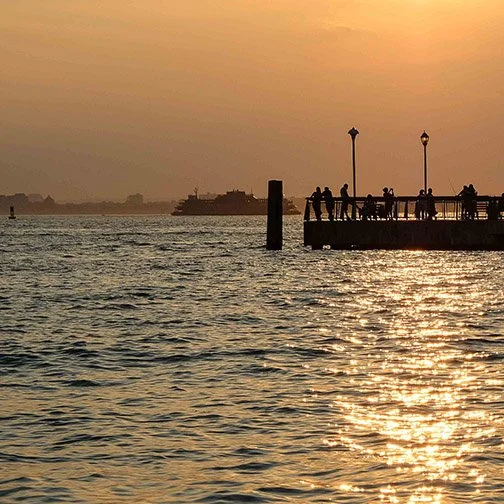Red Hook: How a Historic Neighborhood is Shaping a Sustainable Future
The waterfront Brooklyn neighborhood of Red Hook has undergone substantial transformations over the past decades. Red Hook demonstrates how old buildings transition into new uses by connecting traditional history with modern urban development and environmental practices following Hurricane Sandy. This article examines the history of Red Hook while analyzing its famous structures and describes both Hurricane Sandy's destructive impact and the neighborhood's ongoing sustainable redevelopment.
1. The Industrial Past of Red Hook Developed the Unique Neighborhood Character
Before its current state, Red Hook functioned as a busy industrial center with docks, warehouses, and manufacturing facilities. The area served as a critical trade, production, and shipping center because of its access to the Upper Bay and the Port of New York. The Red Hook Terminal and surrounding warehouses operated as principal entry points for imported goods destined for New York City.
Many industrial structures built during the late 1800s and early 1900s continue to stand in Red Hook as the neighborhood experienced its industrial development. The structures, which used to be warehouses, factories, and port facilities, display high ceilings along with exposed brick and steel beams that showcase the past industrial operations of the neighborhood.
For several decades, Red Hook escaped gentrification while keeping its authentic nature intact because other Brooklyn neighborhoods underwent rapid development. Red Hook entered its path toward becoming a thriving residential and cultural area only in the early 2000s.
2. The Impact of Hurricane Sandy: A Devastating Challenge for Red Hook
On October 29, 2012, Hurricane Sandy brought destruction throughout all of New York City, and Red Hook was one of the affected areas. Numerous waterfront regions experienced extensive flooding because of the storm. The storm-surge water flooded buildings to such depths that several feet of water submerged some structures.
The historic waterfront structures, along with commercial facilities, experienced severe destruction in Red Hook because they were situated close to the shore. This disaster brought forward a critical point for Red Hook. Although the flooding damaged many neighborhoods, it created a new dedication toward sustainability and adaptive reuse during the rebuilding efforts.
3. Red Hook’s Revival: Historic Buildings Restored with Sustainable Vision
Red Hook proved itself as an exemplary case of urban renewal through resilience after Hurricane Sandy destroyed the area. The neighborhood preserved its historical structures by restoring damaged buildings to maintain their original character while adding contemporary features and sustainable building elements.
The Red Hook Winery demonstrates how this approach has achieved success through its transformation. The winery resides within a historical waterfront warehouse, which provides magnificent views of the Upper Bay and Governor’s Island, as well as the Statue of Liberty. The building's original exposed brick walls, together with steel beams and wooden beams, remain intact at the winery to create an industrial-chic appearance that serves modern business needs.
Sustainability in Design
The building renovations, such as the Red Hook Winery, incorporated energy-efficient solutions along with sustainable building materials. For example:
The building achieves maximum energy savings by reducing heat loss through its high-performance windows, which also enable unobstructed waterfront views.
The construction process utilized recycled materials to reduce waste and establish a circular economy framework.
The winery sources its wine ingredients from local farms to practice sustainable agriculture and lower its environmental impact.
Sustainability at Red Hook extends beyond energy-efficient buildings because it represents the community-driven principles of the area, where businesses like the Red Hook Winery focus on using local products while maintaining environmental responsibility.
4. The Red Hook Area Demonstrates Notable Adaptive Reuse Projects
The neighborhood contains various adaptive reuse projects after the Red Hook Winery, which merge historic preservation techniques with contemporary design elements. The Fairway Market (now Food Bazar) became an iconic grocery store by occupying an extensive renovated warehouse facility.
The building maintained its industrial original characteristics through its open ceilings and raw concrete floors while incorporating sustainable building materials and energy-efficient technology solutions. The neighborhood demonstrates its dedication to local cultural development through its creation of the Greenlight Bookstore in a converted building, which supports creative expression.
The Role of Green Spaces
The neighborhood has adopted green infrastructure as a key part of its sustainability initiatives. After Sandy struck the city, the construction of new developments included flood-resilient landscapes through rain gardens and permeable surfaces. Green spaces in the area manage stormwater better and simultaneously promote ecological health throughout the neighborhood.
5. A Model for Future Resilient Neighborhoods
Red Hook demonstrates, through its post-Hurricane Sandy transformation, how other neighborhoods across New York City and globally should adapt to natural disasters. The combination of sustainable practices with historic building adaptive reuse enables Red Hook to establish an approach that safeguards neighborhood heritage while building a sustainable future.
The success of Red Hook results from active community involvement, together with environmental stewardship and joint work between local businesses and residents and city planning authorities. Red Hook demonstrates how sustainability can be embedded into urban renewal initiatives as cities worldwide seek solutions to climate change and urban expansion.
Conclusion: Red Hook’s Sustainable Legacy
The transformation of Red Hook demonstrates sustainability and community resilience through its blending of industrial heritage with sustainable development principles. The combination of historic building restoration and green infrastructure implementation, with energy-efficient design elements, demonstrates how cities can handle climate change while maintaining their cultural heritage.
The story of Red Hook demonstrates how adaptive reuse and sustainable development power the creation of future urban environments through its ongoing development.
The transformation of Red Hook demonstrates sustainability and community resilience through its blending of industrial heritage with sustainable development principles.

